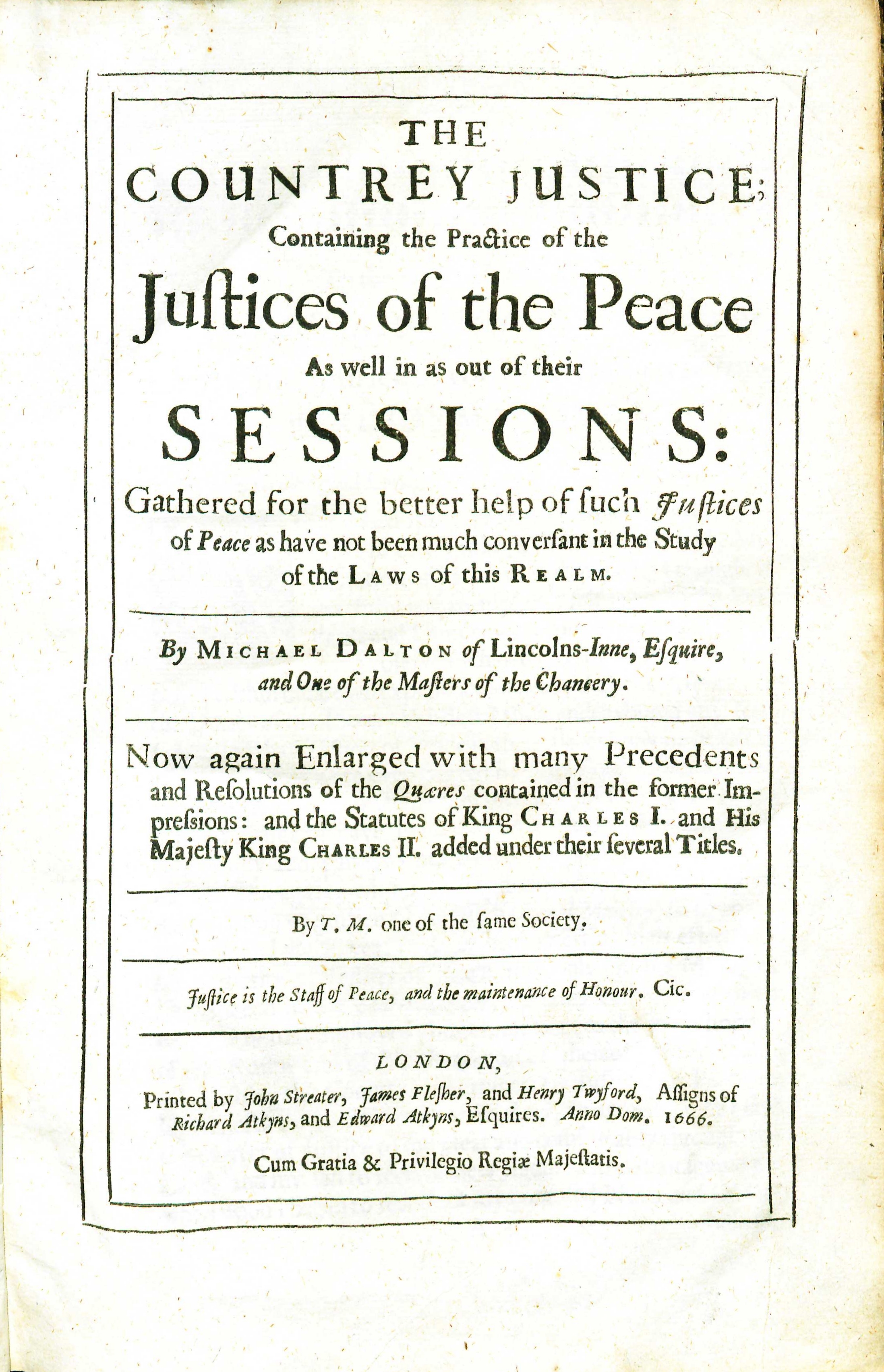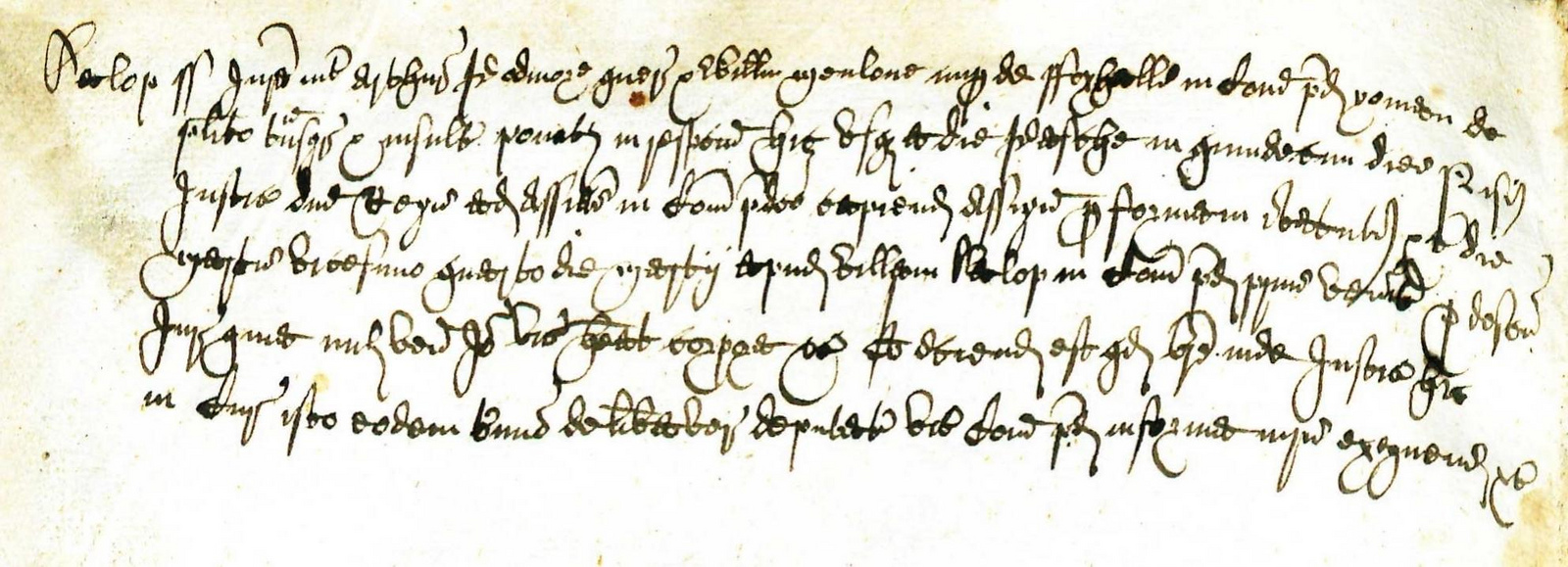Difference between revisions of "Countrey Justice"
| Line 32: | Line 32: | ||
==See also== | ==See also== | ||
*[[George Wythe Room]] | *[[George Wythe Room]] | ||
| + | *''[[Officium Vicecomitum|Officium Vicecomitum: The Office and Avthoritie of Sherifs]]'' | ||
*[[Wythe's Library]] | *[[Wythe's Library]] | ||
Revision as of 15:38, 6 July 2015
by Michael Dalton
| The Countrey Justice | |
|
Title page from The Countrey Justice, George Wythe Collection, Wolf Law Library, College of William & Mary. | |
| Author | Michael Dalton |
| Published | London: Printed by John Streater, James Flesher, and Henry Twyford, assigns of Richard Atkyns, and Edward Atkyns, esquires |
| Date | 1666 |
| Language | English |
| Pages | [14], 460 (i.e. 456), [10] |
| Desc. | Folio (28 cm.) |
| Location | Shelf L-5 |
The office of justice of the peace originated during the Middle Ages, when the primary responsibility of JPs was to suppress riots and keep the peace.[3] By the sixteenth century, their power had increased and come to include various judicial and administrative tasks.[4] Most JPs, however, had no legal training, and a number of justice of the peace manuals were published to provide guidance in the form of clear, comprehensive, and easy to understand instruction.[5]
The Countrey Justice was among the most popular manuals, and was published in at least twenty editions between 1618 and 1746.[6] It provided a summary of the current law on a diverse array of subjects, from robbery and murder, to cattle and sheep, and included a particularly detailed description of the proper procedure for prosecuting witches. One of the earliest manuals to be arranged in alphabetical order, Dalton’s book was popular both in England and New England, where it provided a ready and accessible summary of the English common law for the new colonies.[7]
Evidence for Inclusion in Wythe's Library
Description of the Wolf Law Library's copy
Recent full blind calf, gold tooled edges; annotation [in law french?] upside-down in brown/black ink on flyleaf.
View the record for this book in William & Mary's online catalog.
See also
References
- ↑ D.A. Orr, "Dalton, Michael (1564-1644)" in Oxford Dictionary of National Biography, accessed May 21, 2015.
- ↑ Ibid.
- ↑ Mike Widener, "The Taussig Collection: Justice of the peace manuals," Yale Law School: Lillian Goldman Law Library, April 21, 2014.
- ↑ Ibid.
- ↑ Ibid.
- ↑ Helen L. Hull, "'Lowe and lay ministers of the peace;' The Proliferation of Officeholding Manuals in Early Modern England," in Renaissance Papers 2009, ed. Christopher Cobb (Rochester, NY: Camden House, 2010), 47.
- ↑ Edgar J. McManus, "Laws for Living Saints," in Law and Liberty in Early New England: Criminal Justice and Due Process, 1620-1692 (Amherst, MA: University of Massachusetts Press, 1993), 12.


